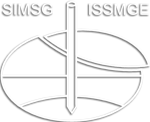Monitoring the remediation of groundwater polluted by MSW landfill leachates by activated carbon and zeolite with spectral induced polarization technique
Monitoring the remediation of groundwater polluted by MSW landfill leachates by activated carbon and zeolite with spectral induced polarization technique
Zeolite and activated carbon (AC) were used as the filling materials for a permeable reactive barrier (PRB) project in Tianziling Municipal Solid Waste (MSW) landfill in Hangzhou, China, for remediating groundwater contaminated by MSW leachates containing ammonium, chemical oxygen command (COD) and heavy metals (e.g. Fe3+, Mn2+). The spectral induced polarization (SIP), an emerging noninvasive geoelectrical method, was used to monitor the spatiotemporal contaminant distribution for its high sensitivity to pore fluid chemistry and mineral-fluid interface composition. Two columns filled with zeolite and AC were permeated with authentic groundwater collected from the landfill site, wherein the SIP responses were measured over a frequency range from 0.01 to 1000Hz. The adsorption capacities of zeolite for COD (7.08mg/g) and ammonium (9.15mg/g) were higher than those of AC for COD (2.75 mg/g) and ammonium (1.68 mg/g). The SIP responses were fitted by Cole-Cole model to obtain the relaxation time normalized chargeability (mn). The mn of zeolite were positively linear with the adsorbed ammonium (R2=0.999) and COD (R2=0.999); while the mn of AC were negatively linear with the adsorbed ammonium (R2=0.9341) and COD (R2=0.9790). These results suggest that the mn could be a surrogate for the contaminant saturation. Therefore, the laboratory real-time noninvasive SIP for zeolite and AC showed promises for monitoring the saturation process, providing the basis for the future field PRB monitoring.
Y. Yang; Y. Luo; S. Zhou; J. Chen; J. Cao; H. Pu; B. Bate
9th International Congress on Environmental Geotechnics (ICEG2023)
Characterisation, Remediation and Management of Contaminated Sites and Wastes
https://doi.org/10.53243/ICEG2023-76
